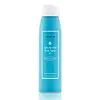What's inside
What's inside
 Key Ingredients
Key Ingredients

 Benefits
Benefits

 Concerns
Concerns

No concerns
 Ingredients Side-by-side
Ingredients Side-by-side

Water
Skin ConditioningNiacinamide
SmoothingAcetyl Glucosamine
Skin ConditioningHydrolyzed Oat Protein
Skin ConditioningGalactomyces Ferment Filtrate
HumectantHydrolyzed Cicer Seed Extract
Skin ProtectingMedicago Sativa Extract
TonicPueraria Lobata Root Extract
HumectantSilybum Marianum Seed Extract
Skin ConditioningAmylopectin
Dextrin
Absorbent3-O-Ethyl Ascorbic Acid
Skin ConditioningAlpha-Arbutin
AntioxidantPolydextrose
HumectantHydroxyacetophenone
AntioxidantSodium Gluconate
Skin ConditioningPotassium Sorbate
PreservativeSodium Benzoate
MaskingButylene Glycol
HumectantWater, Niacinamide, Acetyl Glucosamine, Hydrolyzed Oat Protein, Galactomyces Ferment Filtrate, Hydrolyzed Cicer Seed Extract, Medicago Sativa Extract, Pueraria Lobata Root Extract, Silybum Marianum Seed Extract, Amylopectin, Dextrin, 3-O-Ethyl Ascorbic Acid, Alpha-Arbutin, Polydextrose, Hydroxyacetophenone, Sodium Gluconate, Potassium Sorbate, Sodium Benzoate, Butylene Glycol
Water
Skin ConditioningButylene Glycol
Humectant1,2-Hexanediol
Skin ConditioningNiacinamide
SmoothingSalicylic Acid
MaskingGlycolic Acid
BufferingHamamelis Virginiana Leaf Extract
Skin ConditioningAloe Barbadensis Leaf Extract
EmollientHouttuynia Cordata Extract
Skin ConditioningMadecassoside
AntioxidantAsiaticoside
AntioxidantAllantoin
Skin ConditioningLactobacillus/Papaya Fruit Ferment Extract
AbrasiveZingiber Officinale Root Extract
MaskingAnanas Sativus Fruit Extract
Skin ConditioningTaraxacum Officinale Rhizome/Root Extract
Skin ConditioningAsiatic Acid
Skin ConditioningMadecassic Acid
Skin ConditioningCitrus Junos Fruit Extract
Skin ConditioningLonicera Japonica Flower Extract
Skin ConditioningChamomilla Recutita Flower Extract
MaskingXanthan Gum
EmulsifyingSodium Citrate
BufferingPotassium Hydroxide
BufferingEthylhexylglycerin
Skin ConditioningCitric Acid
BufferingCaprylyl Glycol
EmollientWater, Butylene Glycol, 1,2-Hexanediol, Niacinamide, Salicylic Acid, Glycolic Acid, Hamamelis Virginiana Leaf Extract, Aloe Barbadensis Leaf Extract, Houttuynia Cordata Extract, Madecassoside, Asiaticoside, Allantoin, Lactobacillus/Papaya Fruit Ferment Extract, Zingiber Officinale Root Extract, Ananas Sativus Fruit Extract, Taraxacum Officinale Rhizome/Root Extract, Asiatic Acid, Madecassic Acid, Citrus Junos Fruit Extract, Lonicera Japonica Flower Extract, Chamomilla Recutita Flower Extract, Xanthan Gum, Sodium Citrate, Potassium Hydroxide, Ethylhexylglycerin, Citric Acid, Caprylyl Glycol
 Reviews
Reviews

Alternatives
Ingredients Explained
These ingredients are found in both products.
Ingredients higher up in an ingredient list are typically present in a larger amount.
Butylene Glycol (or BG) is used within cosmetic products for a few different reasons:
Overall, Butylene Glycol is a safe and well-rounded ingredient that works well with other ingredients.
Though this ingredient works well with most skin types, some people with sensitive skin may experience a reaction such as allergic rashes, closed comedones, or itchiness.
Learn more about Butylene GlycolNiacinamide is a multitasking form of vitamin B3 that strengthens the skin barrier, reduces pores and dark spots, regulates oil, and improves signs of aging.
And the best part? It's gentle and well-tolerated by most skin types, including sensitive and reactive skin.
You might have heard of "niacin flush", or the reddening of skin that causes itchiness. Niacinamide has not been found to cause this.
In very rare cases, some individuals may not be able to tolerate niacinamide at all or experience an allergic reaction to it.
If you are experiencing flaking, irritation, and dryness with this ingredient, be sure to double check all your products as this ingredient can be found in all categories of skincare.
When incorporating niacinamide into your routine, look out for concentration amounts. Typically, 5% niacinamide provides benefits such as fading dark spots. However, if you have sensitive skin, it is better to begin with a smaller concentration.
When you apply niacinamide to your skin, your body converts it into nicotinamide adenine dinucleotide (NAD). NAD is an essential coenzyme that is already found in your cells as "fuel" and powers countless biological processes.
In your skin, NAD helps repair cell damage, produce new healthy cells, support collagen production, strengthen the skin barrier, and fight environmental stressors (like UV and pollution).
Our natural NAD levels start to decline with age, leading to slower skin repair, visible aging, and a weaker skin barrier. By providing your skin niacinamide, you're recharging your skin's NAD levels. This leads to stronger, healthier, and younger looking skin.
Another name for vitamin B3 is nicotinamide. This vitamin is water-soluble and our bodies don't store it. We obtain Vitamin B3 from either food or skincare. Meat, fish, wheat, yeast, and leafy greens contain vitamin B3.
The type of niacinamide used in skincare is synthetically created.
Learn more about NiacinamideWater. It's the most common cosmetic ingredient of all. You'll usually see it at the top of ingredient lists, meaning that it makes up the largest part of the product.
So why is it so popular? Water most often acts as a solvent - this means that it helps dissolve other ingredients into the formulation.
You'll also recognize water as that liquid we all need to stay alive. If you see this, drink a glass of water. Stay hydrated!
Learn more about Water